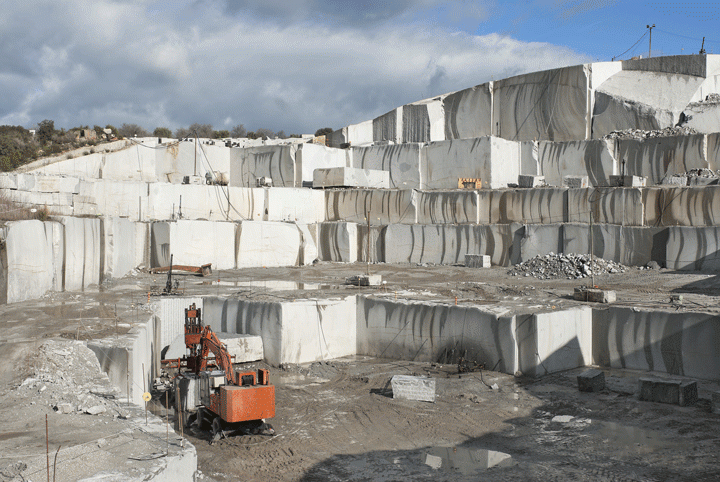Discovering Granite Quarries in South Africa: A Comprehensive Guide
Discovering Granite Quarries in South Africa: A Comprehensive Guide
Blog Article
Revealing the Mysteries of Granite Quarrying: Where Strength and Style Meet
The world of granite quarrying is a world where the raw strength of nature assembles with human virtuosity to create structures that stand the examination of time with an air of elegance. From the midsts of quarries to the thorough polishing in workshops, the process of changing granite into architectural wonders is a complex dancing of practice and development. As we peer into the depths of this ancient craft, we start to discover the hidden ins and outs that form the really significance of our built environment.
The Origins of Granite Quarrying
In the annals of building background, the beginnings of granite quarrying are shrouded in a tapestry of ancient workmanship and geological wonders. Going back to old Egypt and Mesopotamia, the removal of granite from quarries noted the start of a trip that would at some point lead to the creation of some of the world's most famous frameworks.
Granite quarrying's origins can be mapped to the experienced artisans who recognized the stone's sturdiness and aesthetic charm. With a combination of primitive tools and sheer determination, these early quarry workers unearthed granite blocks that would certainly come to be the structure blocks of human beings.
As human beings evolved, so did the techniques of quarrying granite. The Romans, renowned for their design prowess, established advanced approaches for drawing out granite to create monuments, holy places, and roads that stood the examination of time.
The tradition of these ancient quarrying methods remains to form modern-day design, with granite staying a symbol of toughness and style in building and construction jobs around the globe. (granite quarries in south africa)
Devices of the Quarrying Trade
The advancement of granite quarrying strategies from ancient worlds to modern-day times highlights the critical duty played by the tools of the quarrying trade in forming the market's practices. In ancient times, quarrying tools were primary, commonly containing chisels, hammers, and wedges made from products like bronze or iron. These tools called for considerable workforce and time to essence granite blocks from quarries.

Additionally, the introduction of pneumatically-driven devices and high-powered equipment has actually substantially lowered the physical labor called for in quarrying procedures, boosting employee safety and security and performance. As the quarrying industry remains to innovate, the tools of the trade continue to be at the center of driving progression and forming the future of granite removal.
Drawing Out Blocks of Granite
Making use of precision equipment and progressed methods, the removal of granite obstructs from quarries has become a sophisticated procedure in the modern quarrying sector. Managed blasting strategies are see this website then used to damage apart the granite into convenient sections.

Polishing and Completing Methods
To achieve a perfect surface area on granite blocks, competent craftsmens utilize a collection of careful polishing and ending up strategies. After the first removal and forming processes, the granite obstructs undergo an extensive polishing stage to enhance their all-natural appeal and resilience. One usual approach used in polishing granite is diamond abrasion, where commercial rubies are used to grind and brighten the stone to a smooth coating. This process not just creates a glossy surface yet likewise guarantees harmony in color and appearance across the granite block.
In enhancement to polishing, completing techniques are used to further refine the granite's look. These strategies may include flaming, refining, or cleaning, each offering distinct structures and coatings to suit different aesthetic choices. Flaming, for circumstances, entails exposing the granite surface to high temperature levels to develop a harsh, textured finish, suitable for outside applications where slip-resistance is essential. Developing, on the other hand, supplies a matte coating that is smooth to the touch, excellent for indoor countertops and floor covering. By meticulously picking and applying these polishing and finishing techniques, artisans can transform raw granite blocks into charming items that display both toughness and style.

Environmental Effect and Sustainability
With the growing focus on environmental awareness in the industry, granite quarrying methods are increasingly looked at for their impact on natural deposits and lasting sustainability. Quarrying for granite can have considerable ecological ramifications. The removal process usually involves making use of heavy machinery, nitroglycerins, and large quantities of water, leading to habitat devastation, soil erosion, and water air pollution. Additionally, the transport of granite from quarries to refining facilities produces carbon exhausts, even more adding to ecological degradation. granite quarries in south africa.
To minimize these visit this site impacts and guarantee sustainability in granite quarrying, industry stakeholders are taking on numerous measures. Executing sophisticated innovations to lower power intake and water use, reclaiming quarried land for ecological remediation, and promoting responsible sourcing methods are some techniques being utilized. Certifications such as the Forest Stewardship Council (FSC) and the Leadership in Power and Environmental Layout (LEED) assistance customers determine environmentally friendly granite items.
Final Thought
To conclude, granite quarrying is a process that requires specialized devices and methods to extract blocks of granite and brighten them to a high level of coating. While the ecological impact of quarrying can be substantial, efforts are being made to improve sustainability techniques in the industry. On the whole, granite quarrying is a fragile balance in between utilizing the strength and elegance of this all-natural stone while decreasing its effect on the environment.
Report this page